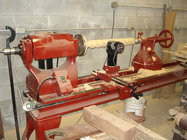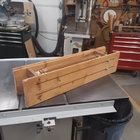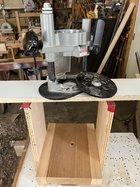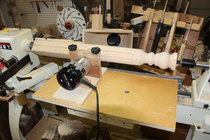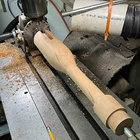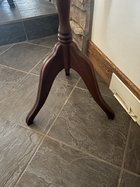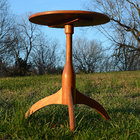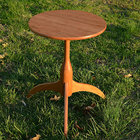Have an upcoming project - table with round legs, which calls for routed mortises for the stretchers. In my head, I had thought about a jig that ran on rails above the work, upon which a plunge router would be held in order to route the mortises. In looking for examples, it seems that everyone has gone 90* to that idea, and placed the router horizontally. It seems that by using a fence, one can control the cut depth. Since I'm now leaning this way - wanted to check my assumptions - very important to get the router 'cradle' level. Need ability to raise and lower it easily as well. Thinking to start with a 1" metal shaft welded to a small square to attach a wooden base for the router to slide on. This assembly would fit into the banjo. I might start with a wooden prototype as I have some dense hardwoods.
If it matters, these legs will be cylindrical where the mortise is cut, and will taper below them. Also, they will be cut at 60* to each other, as it will be a triangle table. The router body is a PC 690.
Any other design criteria or gotchas I should be aware of?
If it matters, these legs will be cylindrical where the mortise is cut, and will taper below them. Also, they will be cut at 60* to each other, as it will be a triangle table. The router body is a PC 690.
Any other design criteria or gotchas I should be aware of?

